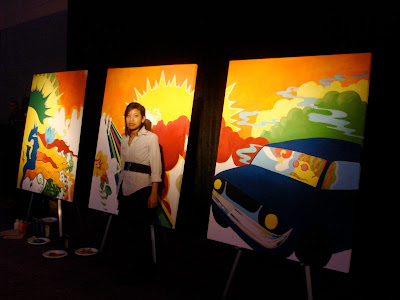
The projection at the 100 years Dealer's Association party was definitely practical because it told you what the party was about and gave you information about when the Association was founded. The auto show also had various pamphlets and stands that told you what you are about to buy and how much it costs. They were also persuasive because each car dealer/brand wanted you to think that they are the best in the auto show.

The most persuasive component of the show, in my opinion, was the freedom to get into any car you like and pretend like you own it. Since cars are the main focus of the auto show, being able to see whether or not you like its features is a key element. Of course you can't take a $300.000 on a little test drive around town, but for many people the interior is a deciding aspect.
There were other persuasive elements such as models giving you bags with a logo on it, men talking about the features etc. A Ford robot attracted a huge crowd by pointing fingers at you, telling you to come up to him and then waving you goodbye.


A red Toyota bag was not a part of the Auto show identity and did not persuade me to buy a Toyota (maybe because I have one), but it tells me what I can do to reuse("Donate your old computer!), reduce ("Go paperless!") and recycle (paper, glass, cardboard). Since it can be carried around and gives information about what Toyota is trying to be about it is also practical. The bag being red probably has something to do with persuasion.


No comments:
Post a Comment